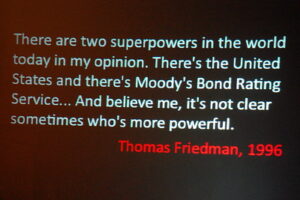Late last month, the New Jersey City University Board of Trustees declared a financial emergency, citing the school’s $20M deficit. On the same day, NJCU President Dr. Sue Henderson announced her resignation after 10 years on the job. With less than a month’s worth of cash on hand, NJCU has asked for a lifeline of $10M from the state legislature to ensure its continued operation.
The Board named Jason Kroll, NJCU’s Vice President and Chief Strategy Officer, as the school’s interim president. In a clear sign that the house is still on fire, NJCU’s Chief Financial Officer suspended all P-Cards, prohibited all unnecessary spending, and instituted new spending and reimbursement rules.
In addition, the school has laid off several senior executives. The school’s faculty union, which tried to raise concerns about the deficit welcomed the move. A letter on the school’s website indicates that students will not be impacted. At the same time, the faculty are bracing for layoffs.
The administration and the faculty are at odds about the cause of the school’s deficit. In a vote of no confidence aimed at Henderson, the faculty union tried to raise substantive concerns last year. The faculty alleged that Henderson’s office spent lavishly on international trips, catered meals, and other expenses while serious financial problems arose at the school. In the faculty’s complaint, the union alleged that the school’s financial position changed from a more than $100M surplus to a $67M debt under Henderson.
Deficit origins disputed
The faculty attributed the debt to the construction of a “mini campus” and luxury student apartments, as well as accelerated administrative hiring. Officially, the administration blamed the deficit on the pandemic and declining enrollment.
That doesn’t quite ring true however. Enrollment at NJCU remained relatively constant until 2020. At that time, enrollment slid by nearly 600 students. At a tuition rate of $450 per hour, to avoid enrollment declines, the school would have to have enrolled about 1,500 students to generate $20M in revenue. The school has not experienced that level of enrollment in the past. Additionally, gaining enrollment during the pandemic would have been near-impossible.
The new spending restrictions follow the disclosure that school administrators had misused P Cards. Charges included expensive restaurant meals, physical therapy, hotels, personal medical expenses and other prohibited expenditures.
While academic programs have not yet been cut, it seems unlikely that operations will go untouched. Given the administrative layoffs and the extent of the deficit, faculty union representatives believe the administration will seek to close programs and furlough instructors. Kroll, the interim president, has placed the school on a 90-day budget to tightly control spending. Meanwhile, the Board of Trustees raised tuition by 3%. The state has not yet responded to the school’s request for a $10M budget extension.
The school’s financial position resulted from the combination of lavish spending, unwise construction and debt acquisition, and lax oversight. As is customary, the people who caused the problem are gone, and the remainder of the staff (and the community) are left to deal with the fallout.
Photo Credit: Hush Hush , via Flickr






















